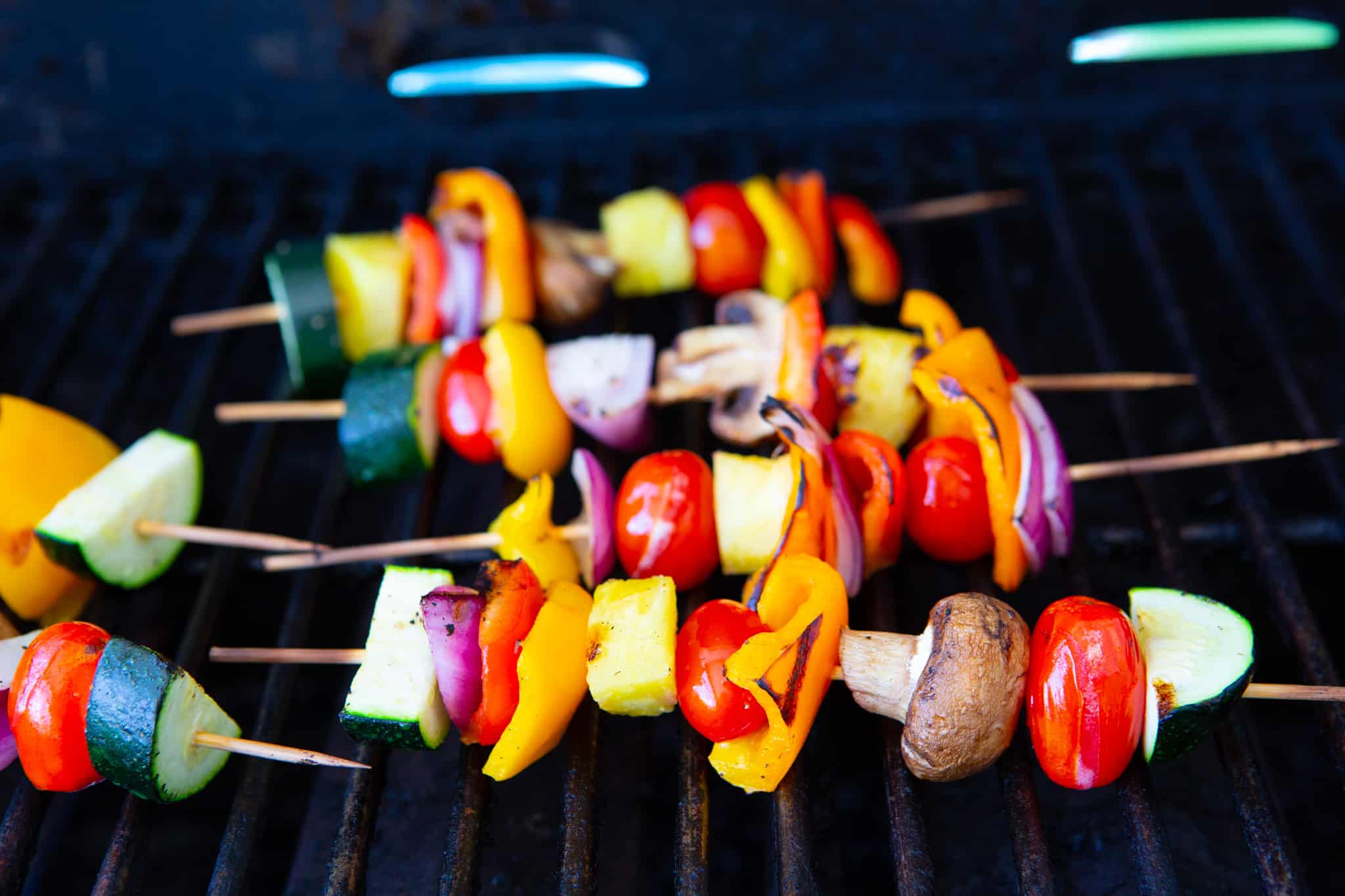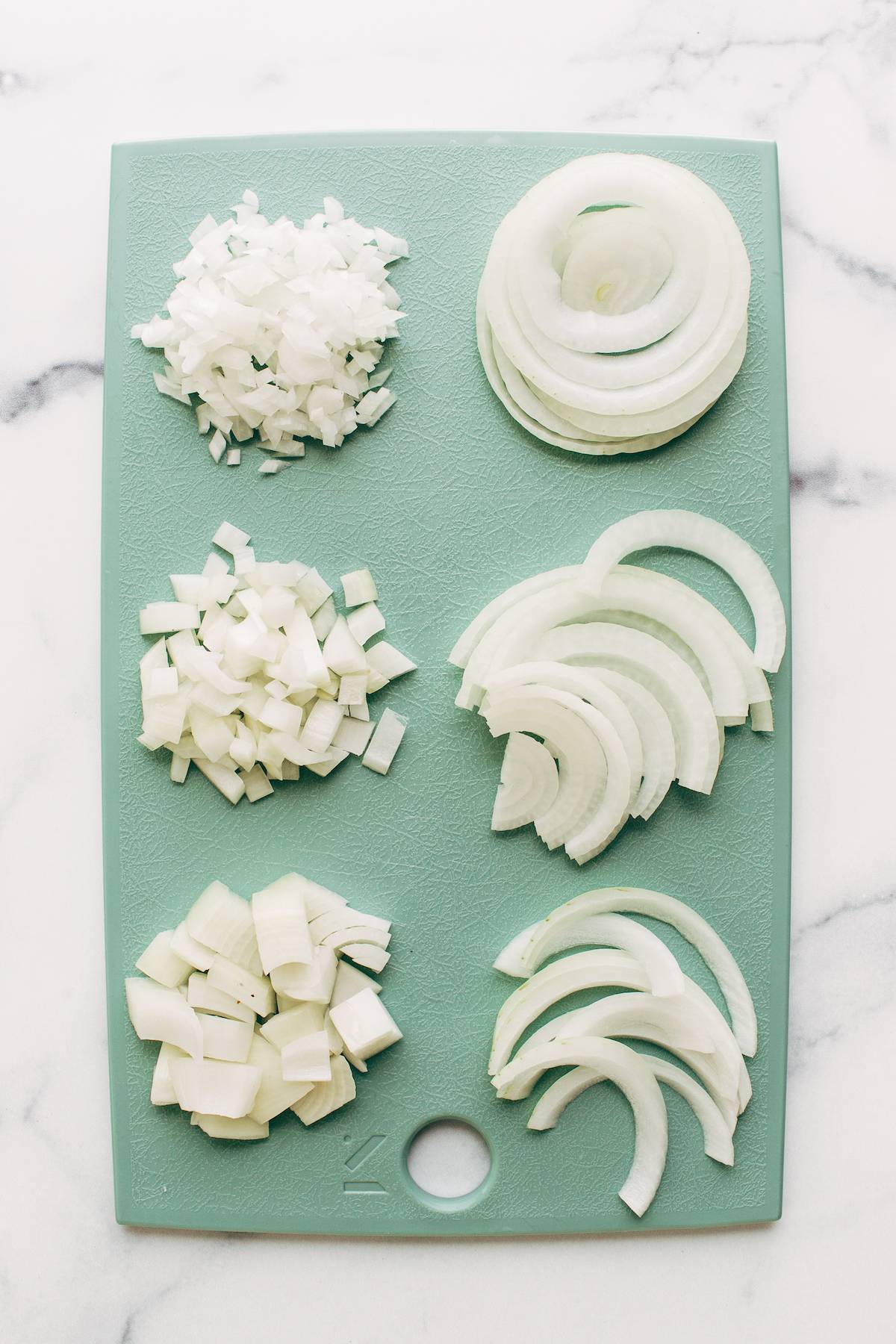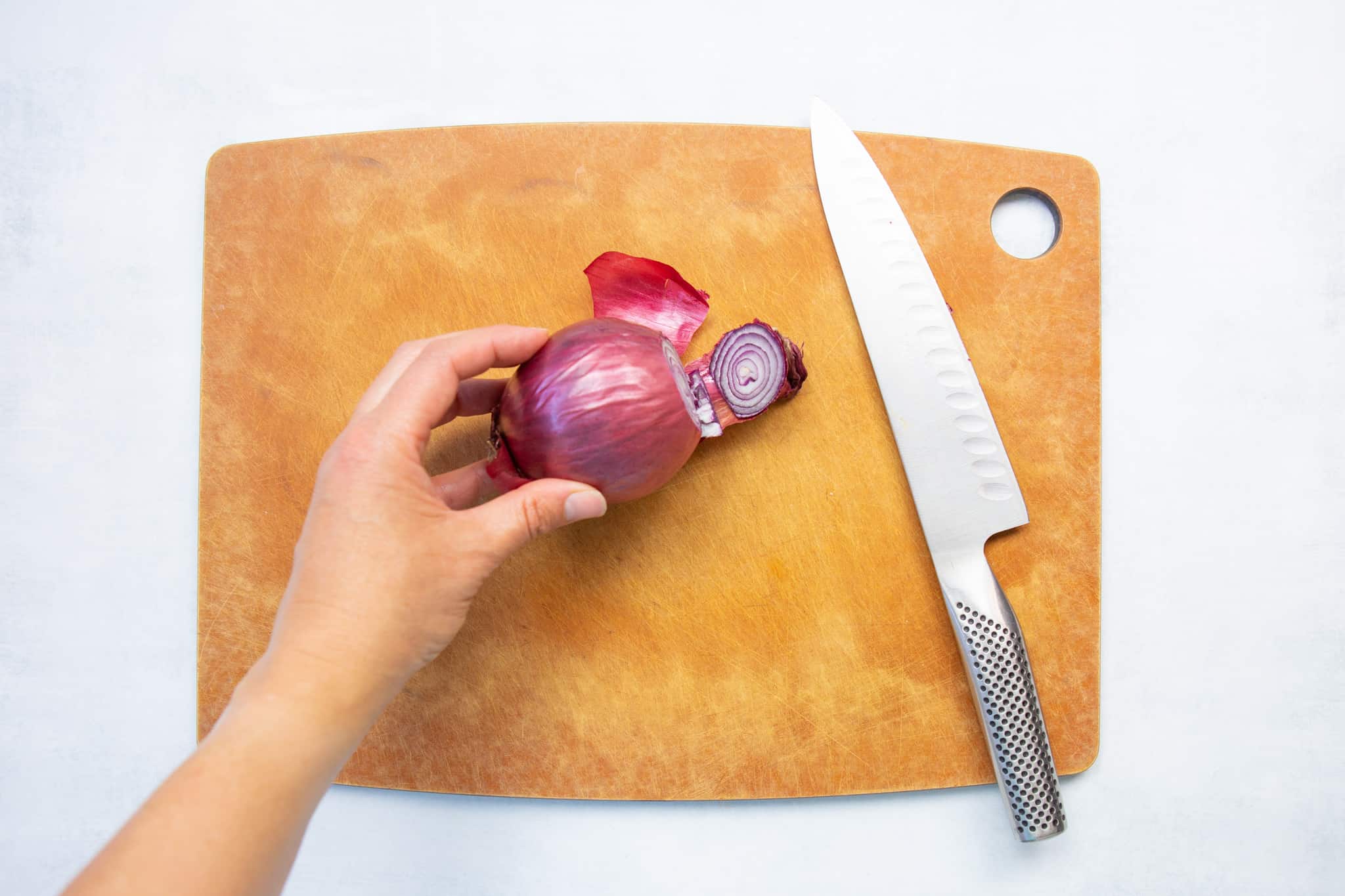Perfectly grilled kabobs are a delicious and satisfying summer meal. But achieving kabob perfection goes beyond just marinating the meat. One key element is ensuring all your ingredients, including the onions, are cut to the right size. This not only provides even cooking but also creates a more pleasant experience when eating your kabobs.
In this guide, we’ll explore how to cut onion for kabobs, giving you tips for achieving perfectly sized pieces that will elevate your next kabob creation.
Choosing and Prepping Onions for Kabobs: A Guide

Onions are a delicious addition to kabobs, but selecting and prepping them properly is key. Here’s how to ensure your onions are perfect for skewering.
Picking the Perfect Onion:
The type of onion you choose matters! Yellow onions are a popular choice for kabobs because of their:
- Balanced Flavor: They complement a variety of kabob ingredients without overpowering them.
- Mild Sweetness: This adds a subtle sweetness that enhances the overall taste profile.
- Shape Retention: Yellow onions hold their shape well when cooked, making them ideal for skewering.
At the store, look for firm and smooth yellow onions for the best results.
Prepping for Perfect Slices:
Before chopping, prepping your onion is essential for achieving uniform pieces. Here’s the step-by-step process:
- Cut the Stem: Start by removing the stem side of the onion.
- Halve it Lengthwise: Cut the onion in half from top to bottom, following the direction of the root.
- Peel the Outer Layer: Remove the papery outer layer to reveal the fresh onion beneath.
- Quarter One Half: To achieve kabob-sized pieces, lay a half-onion face down and slice it downwards. Then, cut that slice again in half to create a quarter piece.
- Ready for Chopping: Now you’re prepared to cut the onion into uniform and manageable pieces for your kabobs!
Mastering the Onion Chop: Tools and Techniques for Kabobs

Onions are a delicious addition to kabobs, but prepping them can be a tearful experience. Here’s how to cut onions efficiently and safely with the right tools and techniques.
Gather Your Arsenal:
- Cutting Board: This provides a stable surface to prevent your onion from slipping and causing accidents.
- Sharp Chef’s Knife: A dull knife will tear the onion, releasing those tear-inducing fumes. A sharp blade ensures clean cuts and minimizes the misery.
- Stable Surface: This is key for good knife control. A wobbly table can lead to mishaps.
Sharpen Your Skills:
- The Half-and-Slice Method: Cut the onion in half from root to tip. Peel away the papery skin. Slice the halves into thin, even rounds. Stack these rounds and make horizontal cuts to create uniform dice. Perfect for bite-sized kabob pieces!
- The Chopped Onion Technique: Alternatively, for finely chopped onions, start by making vertical cuts along the length of the onion, from root to tip, but not cutting all the way through. Then, make horizontal cuts across the onion, creating evenly chopped pieces that will cook through quickly on the kabob.
Mastering Knife Skills for Kabob-Perfect Onions
Onions are a staple ingredient in many kabob recipes, but achieving perfectly sized pieces requires some knife finesse. Here’s how to elevate your chopping game for beautiful and delicious kabobs.
Sharpness is Key:
Ditch the dull blades! A sharp chef’s knife is your best friend for clean cuts. Its sharpness minimizes the crushing or tearing of the onion, ensuring even-sized pieces. The longer, thinner blade also offers better control and maneuverability, making slicing a breeze. Skip the serrated knives and paring knives, as they can leave your onions looking ragged.
The Claw Grip and Rocking Motion:
Mastering a few basic knife skills will take your onion-chopping to the next level. Hold the knife firmly with a secure grip. For extra control, utilize the “claw grip” by curling the fingers of your non-dominant hand and tucking them under the knuckles. Now comes the magic: the rocking motion. Instead of a chopping action, gently rock the knife back and forth while slicing through the onion. This ensures consistent cuts and minimizes the risk of slipping. Maintain contact with the cutting board with the entire length of the blade, using your knuckles as a guide to control the thickness of the slices.
Perfect Kabob-Sized Pieces, Every Time:
By following these tips, you’ll be a pro at achieving perfectly sized and uniform onion pieces for your kabobs. This will enhance the visual appeal of your dish and ensure even cooking. With some practice and these techniques in mind, you’ll be well on your way to kabob mastery!
Mastering the Onion Chop: Perfect Kabob-Sized Pieces

Onions add a delightful touch of flavor and texture to kabobs. But dicing them for skewers can sometimes turn into a tearful affair. Here’s a guide to cutting onions for kabobs, along with some tear-stopping tips!
Sharp Cuts for Perfect Pieces:
- Start with a stable base: Chopping off the stem end of the onion creates a flat surface for easy and safe cutting.
- Halve it lengthwise: With the flat side down, cut the onion in half from the root end to the tip.
- Peel and quarter: Remove the papery outer layer from each half. Then, slice a half onion into a single, thick quarter.
- Uniform is key: Place the quarter on your cutting board with the flat side down. Now, slice the quarter vertically into smaller pieces of similar size. Repeat with the remaining onion half. Aim for pieces that will easily thread onto your kabob skewers and cook evenly.
Keeping Your Eyes Tear-Free:
- Sharpen your weapon: A dull knife damages onion cells, releasing more irritants that cause tears. Use a sharp knife for clean cuts and minimal cell damage.
- The power of chill: Pop your onion in the refrigerator for 15 minutes before chopping. The cold temperature slows down the release of those tear-inducing compounds.
- Water as your shield: Running water can wash away onion irritants. Position your cutting board near a faucet or have a steady stream of water flowing nearby as you chop.
- Banish the irritants with air: Set up a fan or open a window to create airflow that carries the onion irritants away from your eyes.
By following these steps and tips, you’ll be well on your way to perfectly chopped onions and tear-free kabob preparation!
Conclusion
They were elevating your kabobs from good to great hinges on a seemingly simple detail: perfectly cut ingredients. Evenly-sized pieces not only ensure even cooking but also create a visually stunning presentation. This guide equipped you with the knowledge to achieve kabob mastery.
Remember, a sharp knife and chilled onions are your allies for clean cuts. Cut all ingredients, including onions, to a similar size that fits comfortably on your skewers and cooks evenly. Embrace recipe inspiration and explore flavor pairings to create kabobs that tantalize your taste buds. From classic Mediterranean to bold Mexican or tropical Hawaiian, the possibilities are endless. So grab your favorite ingredients, unleash your creativity, and get ready to impress with restaurant-worthy kabobs.
References:
- https://recipes.net/articles/how-to-cut-onions-for-kabobs/
- https://handmadehealthy.com/how-to-cut-onions-for-kabobs/
FAQ About How To Cut Onion For Kabobs: Tips For Perfectly Sized Kabob Ingredients
Q: Why is it essential to cut onions properly for kabobs?
A: Cutting onions properly ensures even cooking and uniform sizes for a perfect kabob skewer.
Q: What is the ideal size for onions in kabobs?
A: Aim for 1-inch square onion pieces to complement other ingredients on the skewer.
Q: How do you dice onions for kabobs?
A: Start by cutting the onion in half from root to stem, then peel and slice each half into 1-inch squares.
Q: Do you have any tips for preventing onion pieces from separating while grilling?
A: Soak the onion pieces in water for 10-15 minutes before threading them onto the skewers, which will help them maintain their shape during cooking.
Q: Should onions be marinated before assembling kabobs?
A: Marinating onions can enhance their flavor, but they should not be marinated for too long, as they may overpower the other ingredients.
Q: Can you mix different types of onions in kabobs?
A: Absolutely! Experiment with red, white, or yellow onions to add color and flavor variations to your kabobs.

Johnny Knuckles Knock-out BBQ is a culinary haven for barbecue enthusiasts, offering a fusion of traditional BBQ and tantalizing street fare. Our secret to delivering mouthwatering dishes lies in our meticulous preparation process. Each cut of meat is lovingly hand-rubbed and slow-smoked over 100% hardwood, creating a symphony of flavors that will leave your taste buds dancing. Whether planning a special event or simply craving an unforgettable meal, Johnny Knuckles Knock-out BBQ is here to elevate your dining experience. Our catering services are designed to bring the sizzle and aroma of our delectable BBQ to your event, ensuring that every guest leaves with a full belly and a smile.